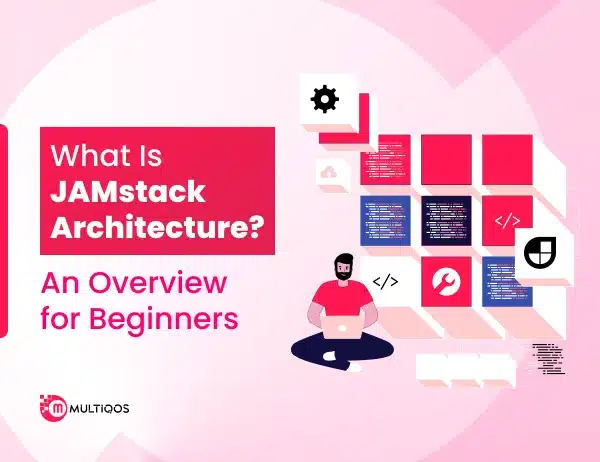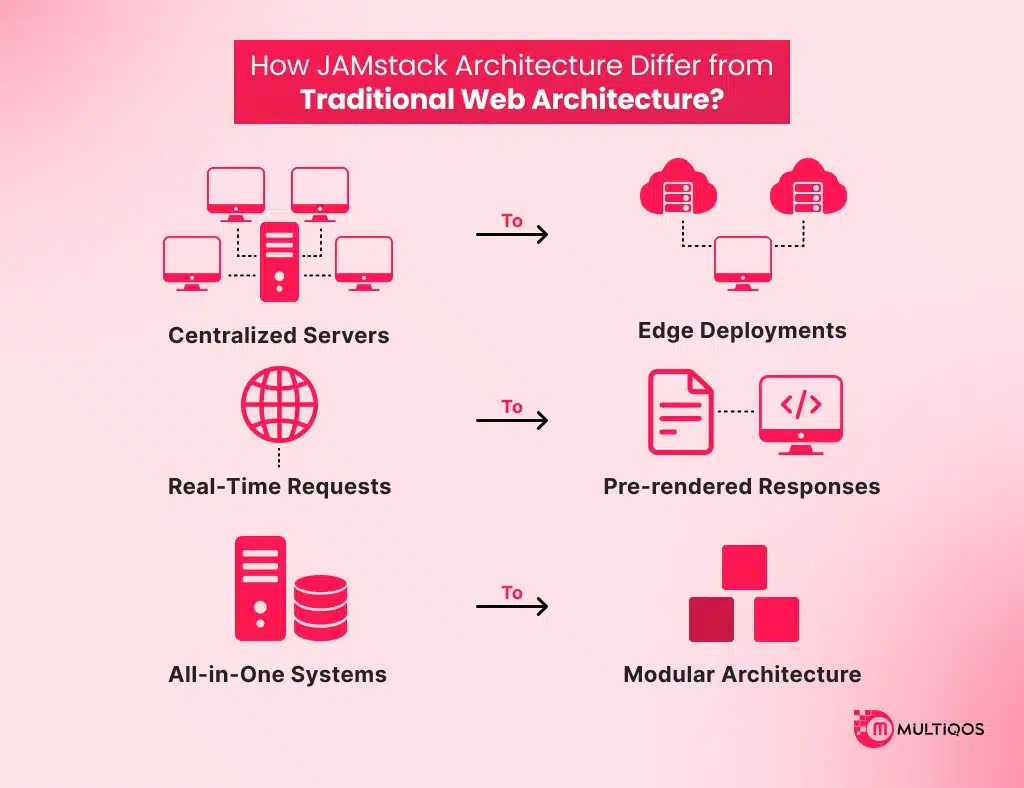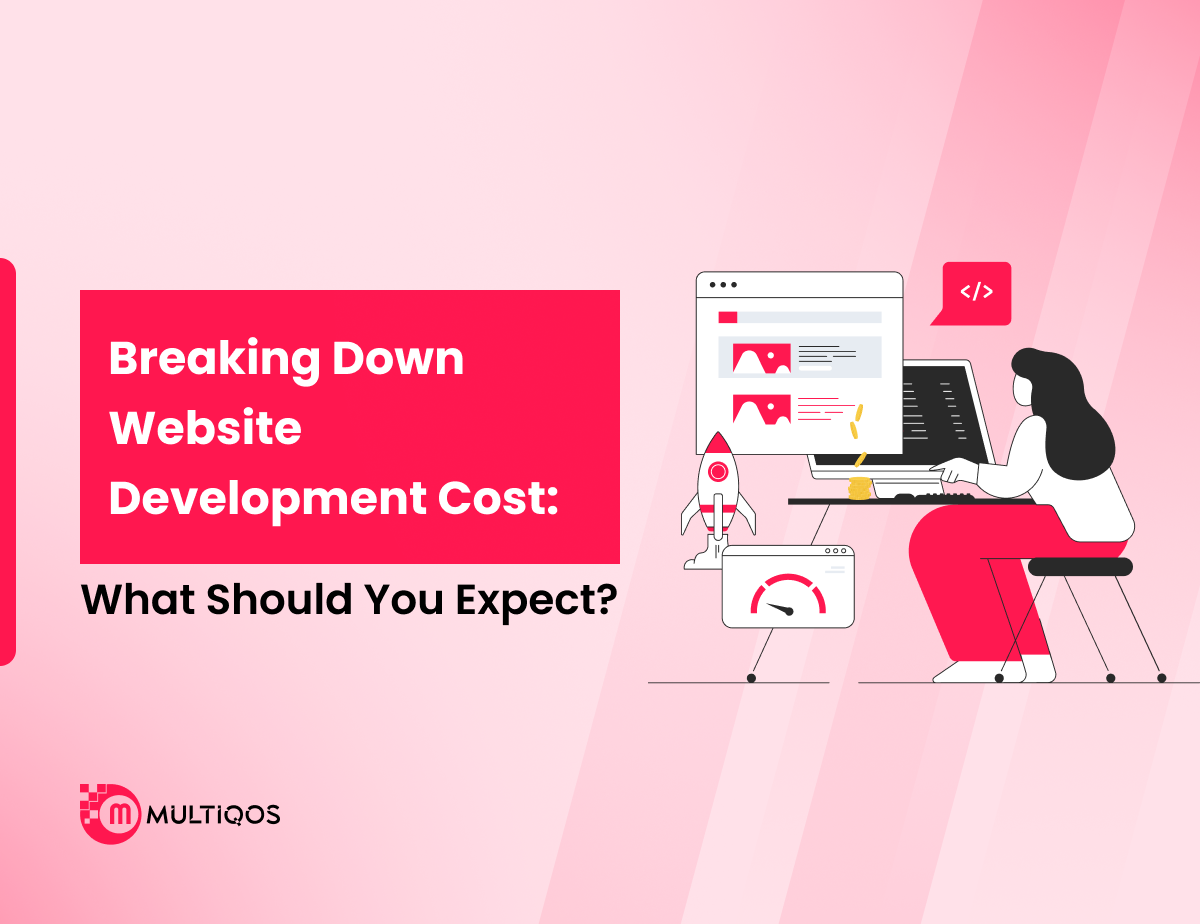What Is JAMstack Architecture? An Overview for Beginners

Summary:
JAMstack is a modern web development architecture designed to deliver fast, secure, and scalable websites by decoupling the frontend from the backend. This blog introduces the core principles behind JAMstack, including the roles of JavaScript, APIs, and Markup.
It explains how JAMstack differs from traditional architectures and why developers and businesses are increasingly adopting it to improve performance, security, and developer workflows. Whether you’re new to web development or exploring new approaches, this overview provides a foundational understanding of JAMstack.
Introduction
Website building isn’t what it used to be. Things have shifted a lot. Now, it’s more about speed, safety, and being able to scale. That’s where something called JAMstack architecture comes into the picture.
Rather than the usual server-heavy way, this setup uses static files, JavaScript, and APIs. It’s more lightweight and tends to be quicker. Less backend stuff to worry about. People who work with websites or are learning to build them are starting to look into this more. It’s becoming a useful thing to know in today’s web world.
What is JAMstack Architecture?
Let’s be honest — when a website drags or doesn’t load right away, most people don’t wait around. They just leave. Expectations today are different. Users want sites that feel smooth, quick, and reliable from the first click. That’s one of the reasons more businesses are starting to shift toward JAMstack. It’s not some trendy framework — it’s just a smarter, faster way to get content in front of people without the delays of a traditional setup.
With JAMstack, pages aren’t being built every time someone shows up. They already originate in advance and are earned directly through CDN, which means low server stem and faster access no matter where your users are. You still get all dynamic functionality thanks to the API and the client script, but without the heavy lifting that comes with a backend-driven model.
For companies that do not want to constantly handle performance problems or back pain, this approach is just sensible. And honestly, working with a leading web development company that understands how to put it properly can save time and prevent a lot of future stress. Whether it’s a custom shop, a blog, or something more customized, JAMstack architecture keeps it lean and ready for the future.
What are the Benefits of Using JAMstack Architecture for Web Development?
If you are someone who is planning to adopt a modern approach when it comes to building a secure, fast, and scalable website, then the JAMstack architecture is a prefect fit as it offers numerous useful benefits. Below are some of the biggest benefits that make it a popular choice equally between developers and businesses:
- One of the biggest reasons people go for JAMstack architecture is how fast the websites load. Since everything’s pre-built and served through CDNs, users barely experience any lag.
- It naturally improves how the site performs overall, and let’s be honest—nobody likes waiting for a page to load, especially Google.
- Another thing is security. Without a traditional backend or database constantly in play, there’s just less that can go wrong or get hacked.
- If you’ve ever dealt with traffic spikes, you’ll appreciate how JAMstack handles scale. There’s no need to mess around with load balancers or backend upgrades.
- Plus, updating a JAMstack site is pretty smooth. Push a change to Git, and the whole thing redeploys—no manual uploads or weird server stuff.
- Hosting is cheap. Or even free, in some cases. Platforms like Netlify or Vercel make it easy to go live without breaking the bank.
- If you need to connect to a CMS, authentication service, or any third-party app, JAMstack architecture works well with APIs. No tight coupling, which keeps things clean.
- Maintenance isn’t a pain either. Because the structure is modular, making changes or fixing things doesn’t involve digging through a mess of code.
- Sites also tend to perform well in search engines—not just because they’re fast, but also because the architecture produces clean URLs and good markup.
- JAMstack apps can even work offline or under poor network conditions. That’s thanks to service workers and caching options.
How JAMstack Architecture Differ from Traditional Web Architecture?
JAMstack architecture introduces a modern way to build websites by replacing several conventional elements of traditional web development. Here’s how it stands apart:
1. From Centralized Servers to Edge Deployments
With older websites, everything runs through one or two web servers. If those get overwhelmed, the whole site slows down. JAMstack flips this by spreading your content across tons of locations worldwide using CDNs. So whether someone visits from India, Europe, or the U.S., the site loads quickly because it’s already nearby.
2. From Real-Time Requests to Pre-rendered Responses
Traditional websites form each page on the go, every time someone travels. It is like building from scratch for each guest. JAMstack architecture does not do this – it prepares everything in advance. So when a visitor shows up, the site is already ready to go, which makes things very sharp.
3. From All-in-One Systems to Modular Architecture
In the past, websites were kind of like a single big machine—frontend, backend, database, all stuck together. JAMstack takes that apart. You can use one service for content, another for payments, and something else for search. It’s more flexible and way easier to maintain or update down the road.
Final Thoughts
All in all, JAMstack architecture feels like a better way to build things online. Sites load quicker, there’s less tech to deal with, and it just works better in most cases.
If someone’s thinking about getting a new website up—or just wants less hassle—this is probably the way to go. And yeah, not everyone wants to dive into code. It might be easier to just hire web developers who already know how this works and let them handle it.
FAQs
It stands for JavaScript, APIs, and Markup. Nothing super fancy. It’s just a different way of making websites. Instead of loading everything from a server every time, it builds stuff early and sends it out fast. Way better when people hate waiting.
Well, in the old days, the server had to build the page on the spot. So yeah, slower. JAMstack does it ahead of time. Pages are ready and just pop up when you click. It’s like the difference between made-to-order and pre-packed. Saves time and stress.
No. You can also plug in APIs and get features like search, contact forms, user logins, and even shopping carts. So yeah, it works for more than just basic stuff.
Speed is a big one. Security too. And honestly, it’s just less annoying to deal with. You don’t have a bunch of backend things running all the time. Developers like it ‘cause it’s cleaner. Clients like it because their sites don’t break as much.
It could go either way. Some folks try it out with tools like Hugo or Gatsby. But not everyone wants to spend hours learning that. If it feels too much, best to hire a web development company that’s done it before. Saves time, fewer headaches.
Get In Touch







